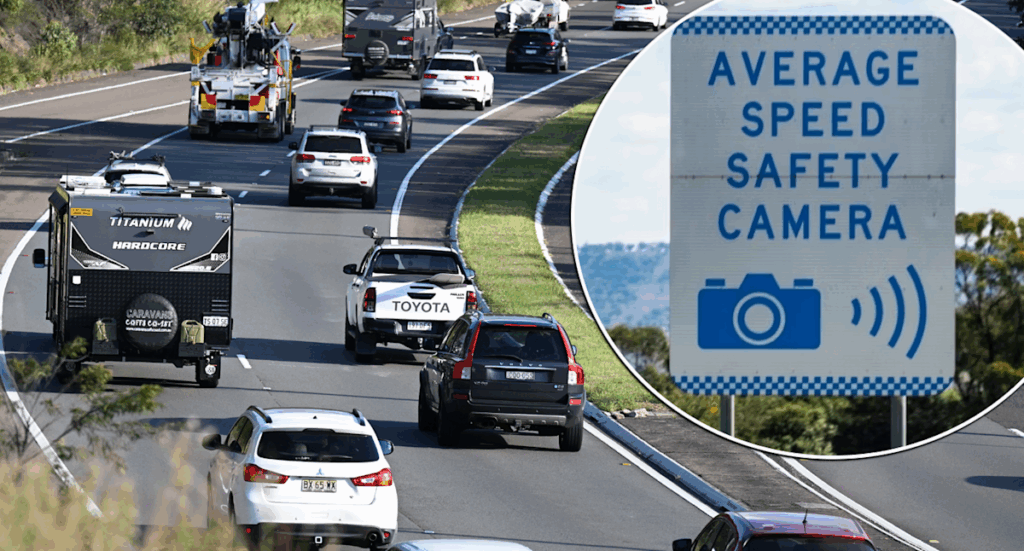
Motorists in New South Wales are being urged to pay close attention to their speedometers as a new era of speed enforcement begins this week. The grace period for the newly installed average speed cameras has ended, and fines will now be issued to drivers who exceed speed limits on two major highways.
These cameras, which have been operational for two months, initially sent warning letters to drivers caught speeding. However, as of July 1, fines will be mailed to any motorist whose average speed exceeds the legal limit. This technology, previously used primarily for heavy vehicles, is now being applied to all road users on selected stretches of the Pacific Highway and the Hume Highway.
A New Approach to Speed Monitoring
The average speed camera system works by recording a vehicle’s entry and exit times at two points along a road. The system then calculates whether the vehicle’s average speed exceeds the speed limit. The two locations chosen for this initiative have been selected based on their crash history: a 15km stretch on the Pacific Highway between Kew and Lake Innes, and a 16km section on the Hume Highway between Coolac and Gundagai.
According to Duncan Lucas, Executive Director of Road Safety Regulation at Transport for NSW, “Motorists are reminded that from today the cameras will begin capturing light vehicle speeding offences.” The initial phase, which began in May, allowed drivers a two-month warning period before penalties were enforced.
Mixed Reactions from Experts and Advocates
While road safety advocates have welcomed the comprehensive speed monitoring, some experts have raised concerns. Traffic lawyer Hayder Shkara has noted that the system may inadvertently target “everyday drivers” who may slightly exceed the speed limit while overtaking or due to momentary distractions. “I also think the average speed cameras may encourage drivers to become overly fixated on maintaining speed rather than focusing on overall safety,” Shkara commented.
In contrast, a spokesperson for Transport for NSW emphasized the initiative’s goal to reduce crashes caused by speeding. “Average speed safety cameras encourage drivers to stick to the speed limit over longer distances, not just when they see a camera,” the spokesperson said.
Understanding the Penalties
For drivers in NSW, the penalties for speeding are significant and vary depending on the severity of the offence. Here is a breakdown of fines and demerit points:
- Exceed speed limit by 10 km/h or less: Unrestricted licence: $145 fine, 1 demerit point; Learner or P1/P2 licence: $145 fine, 4 demerit points
- Exceed speed limit by over 10 km/h but not more than 20 km/h: Unrestricted licence: $334 fine, 3 demerit points; Learner or P1/P2 licence: $334 fine, 4 demerit points
- Exceed speed limit by over 20 km/h but not more than 30 km/h: All drivers: $574 fine, 4 demerit points
- Exceed speed limit by over 30 km/h but not more than 45 km/h: All drivers: $1,097 fine, 5 demerit points
- Exceed speed limit by over 45 km/h: All drivers: $2,959 fine, 6 demerit points
Looking Ahead
The introduction of these average speed cameras marks a significant shift in road safety enforcement in New South Wales. While the system aims to enhance road safety by encouraging consistent adherence to speed limits, the impact on driving behavior and road safety statistics will be closely monitored in the coming months.
As these changes take effect, drivers are advised to remain vigilant and adjust their driving habits accordingly to avoid penalties. The broader implications of this initiative will likely be a topic of discussion among policymakers and road safety experts as they evaluate its effectiveness in reducing road accidents and fatalities.







